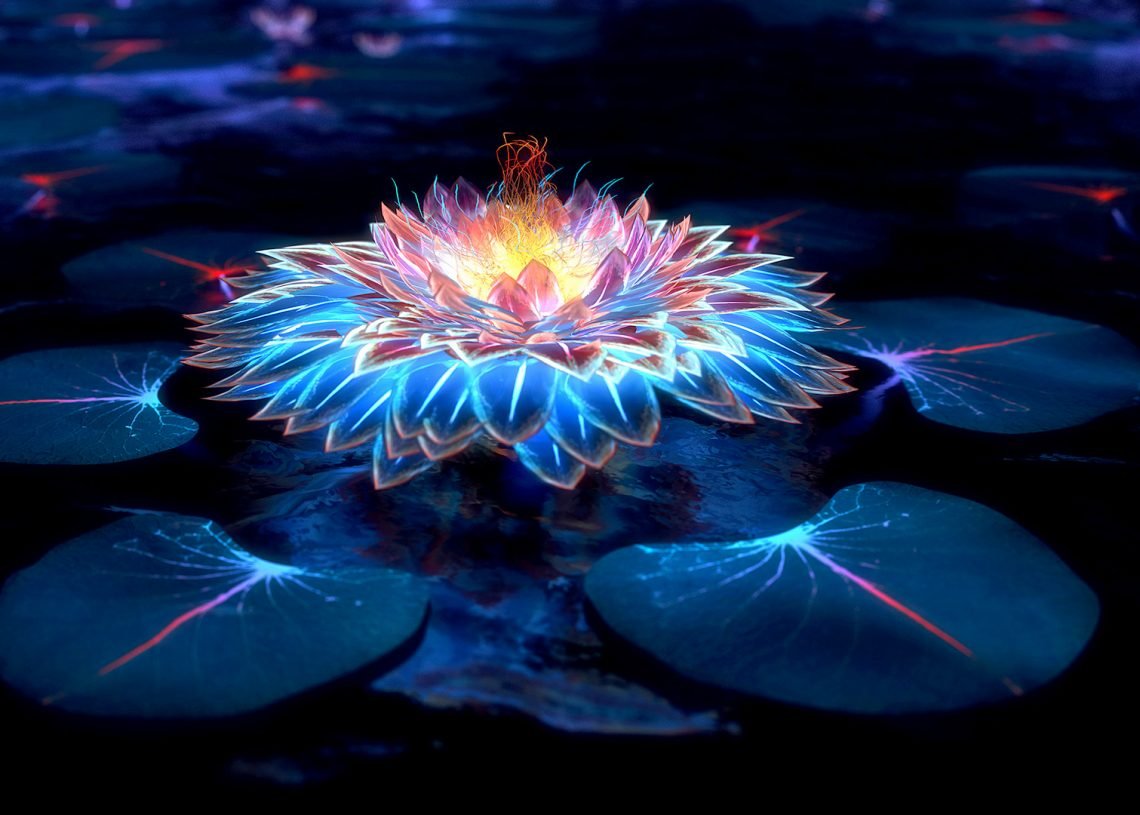In Hindu tradition, the importance of lotus flower is unmatched. The lotus represents the essence of Indian philosophy strikingly and symbolically. The following excerpt would explain the sacredness of the lotus in the Hindu tradition. You would also understand the symbolism and significance of the lotus flower with regard to Hindu rites and rituals.
Significance of the Lotus Flower
Lotus is the most beautiful icon that presents India’s culture and thought to the world beautifully. Gods and goddesses in the Hindu pantheon hold the lotus in their hand or even use it as their divine seat. The lotus stands for truth, auspiciousness and beauty, that is, Satyam, Shivam and Sundaram. The supreme lord also has the same attributes. And therefore, his various parts are often compared to a lotus, that is, lotus- eyes, lotus-feet, lotus-hands, and the lotus of the heart.
The Origin
According to the Vishnu Purana, a lotus has its origin from the navel of Lord Vishnu. This is another reason for the importance of Lotus flower. Lord Brahma appeared through the Lotus flower to create the world. The lotus thus serves as the link between the creator and the supreme cause. It also signifies Brahmaloka, the abode of Lord Brahma.
Colour Combinations – Importance of Lotus Flower
The lotus flower is found in primarily three colours: white, pink and blue.
- The White lotus has another name, that is, the Pundarik. It is often a common offering to the Brahma. Goddess Saraswati is usually the one with this kind of flower.
- Some people call the pink lotus as Kokand and this associate with Vishnu. Goddess Mahalakshmi is generally seen with the pink lotus.
- While the blue lotus has a second name as Indivar, and it associates with Shiva. Goddesses Parvati is commonly the one holding the blue lotus or the Indivar.
Diversity In Names – Significance of the Lotus Flower
This divine flower has several other names as well. They are: Kamalam, Ambujam, Neerajam, Padmam, Arvindam, Saroj, Pushkaram, Kumudam, Mrinalini, Pankajam and Utpalam. Another name for the lotus is Naal. The ancient Buddhist university’s name “Nalanda” was thought after the name ‘naal’. The meaning of the word is ‘that which confers knowledge’.
The lotus symbolizes divinity, fertility, wealth, knowledge and enlightenment. Did you know that the lotus is the inspiration through which the auspicious sign of the Swastika was born. It blooms with the rising sun and closes with sunset. So, it majorly follows the course of the sun. It stands for the highest and the purest of spiritual conceptions. Lastly, its close relation with water makes it the symbol of universal life. Therefore, the significance and importance of the lotus flower also lies in its diverse names.
Beauty Of The Lotus
Despite growing in slushy areas and in murky water, the beauty of the lotus is that it remains untainted. If you look at it wisely, it will always inspire you. It will make you remain pure and noble in all your thoughts and actions under all circumstances. The lotus leaf never gets wet even though it is constantly in water.
This merely symbolizes the man of wisdom, who doesn’t go with the flow, either via sorrow or joy in life. Just as the lotus leaf remains clean on the water which it floats, the same analogy suits for the man. It remains the same for the man. Man stays in isolation, who dedicates all his actions to the lotus-feet of the Brahman or the supreme being.
Energy Centres – Spiritual Importance of Lotus
Every human body has certain energy centres and the yoga scriptures also mention them pretty and precisely. Each centre associates with a lotus that has a certain number of petals. For example, the energy centre in the form of a lotus flower at the top of one’s head has a thousand petals. Sahasra chakra or the crown chakra is the name of this chakra. This chakra opens up when a yogi attains godhood or self-realization. The padmasana or the lotus posture is a very high recommendation when one sits for meditation.
Influence On Architecture – Importance of Lotus
Moreover, the temple architecture of India, the ancient Indian village and the town planning systems are a great source of influencers. The ‘lotus concept’ has had a great impact on Indian architecture. Yes, you heard that right! In the past, the king and the subjects under him were in such a place that they spread out in a circular format from the centre, depending upon their vocations. Thus, it plays and continues to play an important role in the everyday life of India. It is this continuation of significance and philosophical importance that associates with the flower making it the national flower of India.
Influence On Religion And The Globe
The symbolism of the lotus spread from India to Egypt via Persia (modern Iran), and from there to the Western world. In Buddhism, the lotus stands for the miraculous birth of Prince Siddhartha or the Buddha. Buddhists made the lotus extremely popular in Tibet, China, Japan, Indonesia, and other island states in the Indian Ocean. In Jainism too, the symbolism of lotus does not differ much from that of Buddhism and Hinduism. Therefore, the meaning it has in the Hindu rites and rituals is very sacred. These were some of the importance of Lotus.








